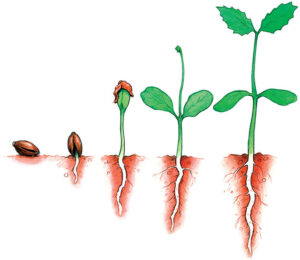 From a gardening standpoint, July is sort of the in-between month where we seem to enjoy the bounties of the month, and not worry about planting anything.
From a gardening standpoint, July is sort of the in-between month where we seem to enjoy the bounties of the month, and not worry about planting anything.
July is fresh sweet corn rolled in butter, plump red cherry tomatoes that pop in your mouth, and juicy peaches that ooze liquid down your chin. You can’t get much better than nature’s simplicity.
July is marigolds, geraniums and every other annual flower coming into its own, blooming their little petals off. July has so much going for it in the way of produce and flowers. Of course, the month also has all the mosquitoes, Japanese beetles and other creatures that make us somewhat appreciate the month a little less.
There are those of us who still troll the garden centers, nurseries and any other type of store, looking for that one or two (or more) plants we don’t really need, and probably don’t have room for, but can’t let them succumb to summer’s weather and employee apathy.
Anything planted in July needs a little extra TLC.
That doesn’t mean you shouldn’t plant things in July. Many of the fall vegetables such as broccoli, cauliflower and cabbage are planted. Second or third plantings of green beans can be sown. And if you want to avoid all the cucumber beetles, planting in July tends to avoid their damage.
Many of the annuals and perennials can be put into the ground or pots, though the annuals might look a little worse for wear and may not amount to much. Still, they need their own chance to make a splash in the world instead of a splash in the compost pile.
Daylilies, hostas, ornamental grasses, and most of the other perennials will adapt to the soil’s warmth, provided the ground is loose and water is available.
That leaves us with trees and shrubs.
Ideally, you’d just look at them, and load your vehicle with everything but them. Of course, a 75 percent off sign is the mental kicker that leads to frustration. Sometimes you can’t look a gift horsechestnut in the mouth.
Woody plants don’t like soil temperatures above 65 degrees F for rooting. Sure, they’ll root somewhat, but they really go to town when the ground is between freezing and 65 degrees. When the soil is around 90 degrees, the plant just kind of sits there.

You can mulch. You can dig a great hole. You can water or mist the plant. Nothing will really encourage the plant to root until the soil starts cooling in October. At that point, if the plant is still alive, it may start to root and thrive next year. “May” is the operative word.
Of course, the plant stands a better chance in your yard than in a black or dark green container on top of the ground.
Whatever you do, with whatever plant you put in the ground, make sure you don’t overwater it. It’s easy to do during the summer, but roots need air. No amount of water will help a plant if the roots aren’t there to suck it up.









